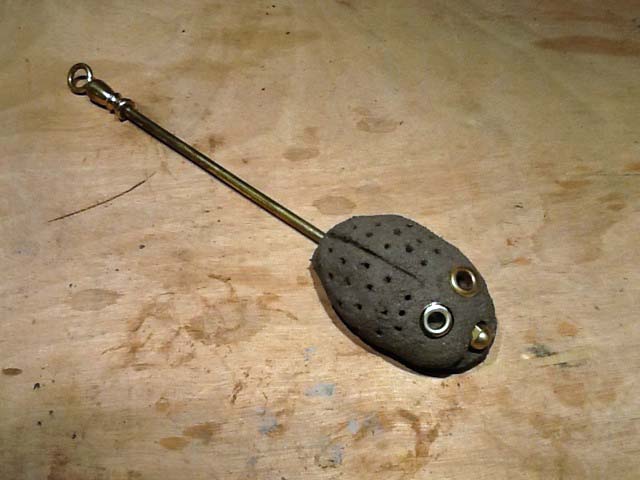Kindling Balls & Fire Starters
1/22/12
 Vitols "Fire Bug"
|
Jan 7, 2012 A. Vitols First, I live in Victoria, Canada - just across the strait - but my problem may be international. Some years ago, say, seven, I bought and used a product called "Red Devil" fireplace clay. it had the color and consistency of coarsely ground firebrick. it was superbly porous. That was/is the requirement - a porous fireplace clay. The reason for needing porous clay is that i use it to shape/mould my version of New England Kindling (Fire Starters) to give to my friends. the Red Devil brand of clay was the best for that purpose.
|
|
Problem now is that I can not find any in this part of our country. there are all kinds of other clays, but none porous enough for the purpose. a fist-sized lump of dried and fired Red Devil clay, soaked in lamp oil or diesel fuel for 10 minutes would burn with a good flame for 15 to 20 minutes which is enough to set almost any kind of wood on fire. Al,
Al, I think your fire-starters are works of art and maybe we could sell them. The brass handles have to be expensive, however. The discussion got me to re-read what Rumford wrote about "kindling balls" in the footnote on page 372. Boiled down, Rumford's "kindling balls" seem to be made of equal parts coal dust and clay - and maybe some sawdust - formed into a goose-egg sized ball and dried. Adding some "nitre" (which is sodium nitrate) makes it more flammable, says Rumford, but but maybe so would a squirt of charcoal lighter fluid or kerosene. Or maybe the balls could be ignited with a match without nitre. Anyway I get the impression that Rumford's "kindling balls" were cheap and consumable - not fitted with handles and re-used. I also think that, if they could be ignited with a match or a little squirt of lighter fluid that it would be less fiddly than soaking them in a bucket of oil. Somewhere in this discussion is an experiment. I have some clay and probably can get some coal and sawdust. Want to come to Port Townsend? Let's try it.
Warm regards,
1/28/12 A. Vitols avitols@telus.net to Jim I will be tied up with various "need immediate attention" tasks for the next few weeks so my quest will have to be delayed. By the way, after much experimentation I've concluded that fire clay, regardless of the amount of sand added (nothing added is just as bad), is not sturdy enough and breaks apart very easily. Therefore, the solution must lie in some sort of refractory cement. I wish I had asked and noted what the mix was that I got from my friennd. Of course I didn't expect him to die at 55. All I know for sure is that he used that mixture mixed with water to "plaster" the insides of his super-hot heat-treat ovens. I can't recall the temperatures exactly, but he annealed and hardened stainless steel, so they hotter than cherry red. I did the same with enough moisture to be able to "sculpt". Somewhat like making sand castles on the beach. When I get some time I will make a few of those parafin-sawdust goose eggs. Must do some more research as to what the substance was that made the "eggs" ignite easily and can it be readily acquired. I'll be back with my nose to the grindstone late februarysh. cheers Al Okay, I have some refractory cement so I'll try that too. Maybe ordinary plaster would work too. And maybe it matters little if the clay balls fall apart if they are consumable. We'll see. Jim
|

Back to Techinical Details
Buckley Rumford Fireplace Home Page
Copyright 1995 - 2012 Jim Buckley
All rights reserved.
webmaster